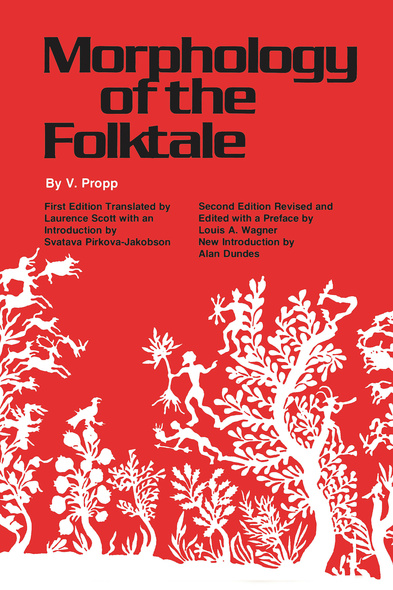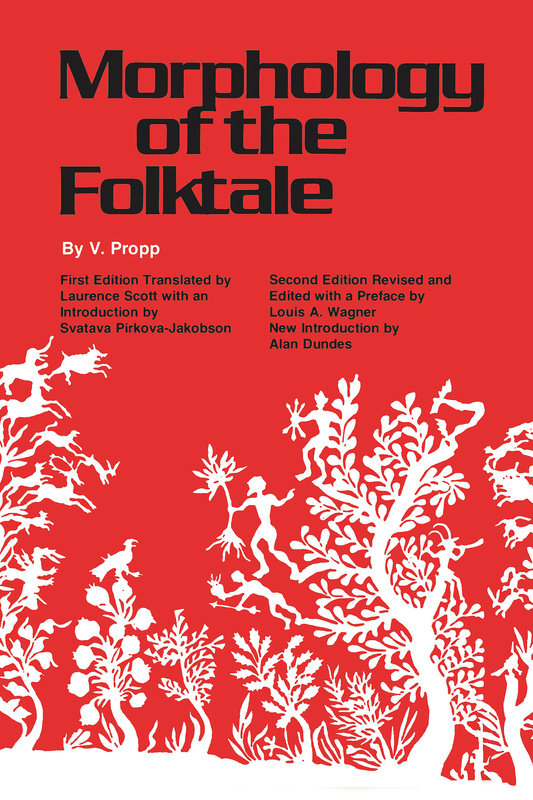Morphology of the Folktale
Second Edition
University of Texas Press
This book is the classic work on forms of the European folktale.
Propp's work is seminal...[and], now that it is available in a new edition, should be even more valuable to folklorists who are directing their attention to the form of the folktale, especially to those structural characteristics which are common to many entries coming from even different cultures.
It was primarily Claude Lévi-Strauss who made Propp's book popular outside the small circle of Western Slavicists: he immediately recognized the importance of Propp's methodology not only for the study of the fairy-tale, but generally for the study of narrative folklore. [Lévi-Strauss] expressed his admiration for all those’'who for a long time have been Propp's successors without knowing it.'
Morphology will in all probability be regarded by future generations as one of the major theoretical breakthroughs in the field of folklore in the twentieth century.
Vladimir Propp was born in Petersburg, April 29, 1895. In 1932 he was called to a position at the University of Leningrad and went on to make major contributions to Russian folklore studies, comparative mythology, and the classification of folklore genres. His international fame is closely tied to the contributions he made to the structural analysis of folklore in Morphology of the Folktale.
- Preface to the Second Edition
- Introduction to the Second Edition
- Introduction to the First Edition
- Acknowledgements
- Author's Foreword
- I. On the History of the Problem
- II. The Method and Material
- III. The Functions of Dramatis Personae
- IV. Assimilations: Cases of the Double Morphological Meaning of a Single Function
- V. Some Other Elements of the Tale
- A. Auxiliary Elements for the Interconnection of Functions
- B. Auxiliary Elements in Trebling
- C. Motivations
- VI. The Distribution of Functions Among Dramatis Personae
- VII. Ways in Which New Characters Are Introduced into the Course of Action
- VIII. On the Attributes of Dramatis Personae and their Significance
- IX. The Tale as a Whole
- A. The Ways in Which Stories Are Combined
- B. An Example of Analysis of a Tale
- C. The Problem of Classification
- D. On the Relationship of Particular Forms of Structure to the General Pattern
- E. The Problem of Composition and Theme, and of Themes and Variants
- F. Conclusion
- Appendix I. Materials for a Tabulation of the Tale
- Appendix II. Further Techniques of Analyses
- Appendix III. Schemes and Commentary
- Appendix IV. List of Abbreviations
- Appendix V. Comparative Chart of Tale Numbers





